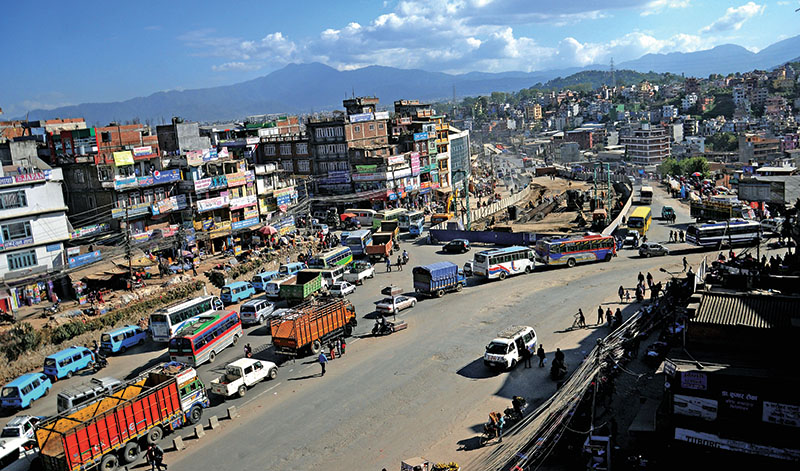Phase II of Ring Road expansion gets okayed
Kathmandu, March 5
The Cabinet meeting has given a go-ahead to the second phase of Ring Road Expansion Project to the Department of Roads, under the Ministry of Physical Infrastructure and Transport.
With the approval granted during Cabinet meeting on Monday, the second phase of expansion work will go ahead as planned.
With the aim of easing traffic congestion across Kathmandu valley, the Chinese government had earlier said it would initiate the second phase of Ring Road expansion works from January. But the work has been halted due to the coronavirus outbreak and as the Chinese workers have been unable to travel to Nepal.
Amrit Mani Rimal, head of Ring Road Expansion Project, informed that they had completed the site clearance along the Kalanki-Maharajgunj section of the project in December at a total cost of Rs one billion.
The project is being funded through Chinese assistance.
As per Rimal, the works of felling trees, relocation of electricity poles, drinking water pipes, sewage lines and other infrastructure are almost completed. Altogether over 2,060 trees had been cut in the Kalanki to Maharajgunj section.
However, relocation of some utility poles, sewage lines and drinking water pipes remain and the process is ongoing. Nepal Electricity Authority and Kathmandu Upatyaka Khanepani Ltd are doing their respective jobs to clear the right of way, informed Rimal.
On January 1, the government had approved the proposal to acquire land in some parts of Kalanki-Maharajgunj road section that will be expanded to 31 metres on each side. Earlier, the government had approved detailed engineering design and detailed project report for execution of the project.
According to Rimal, the 8.2-km long stretch of the Ring Road section will be widened to 62 metres and will comprise an eight-lane road along with additional six-metre-wide lanes on both sides of the road for easy pedestrian movement.
The road stretch will be divided by the dividers for safety.
He further said that they have improved the design of the Kalanki-Maharajgunj section compared to the Koteshwor-Kalanki section, where the government had faced much criticism regarding pedestrian safety. “Two underpasses, a flyover and 10 overhead bridges will be built along the Kalanki-Maharajgunj section.”






